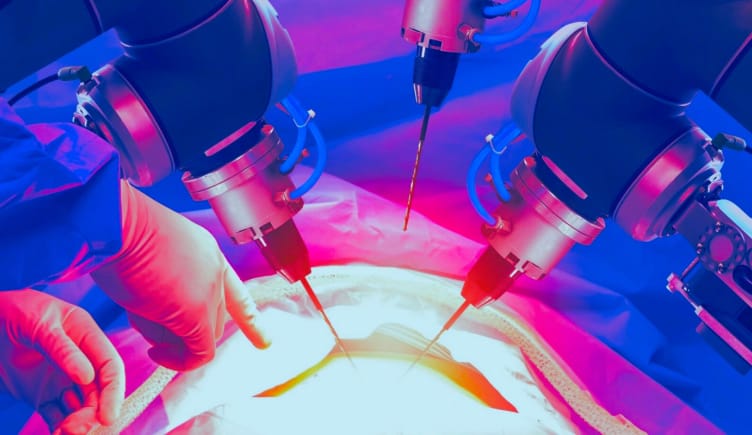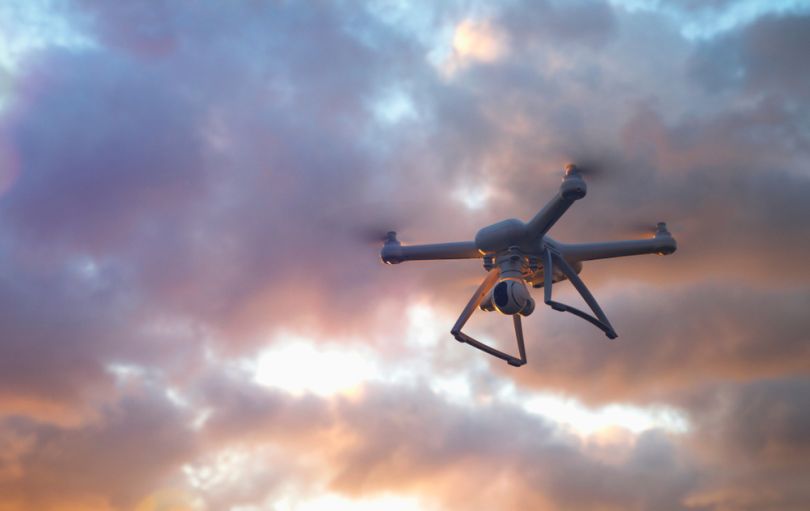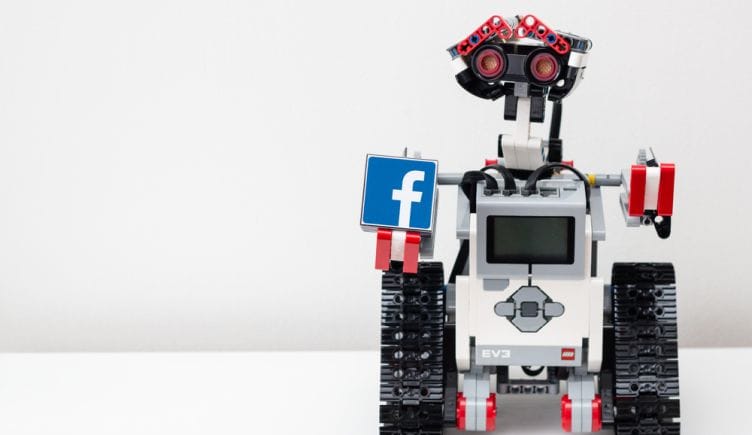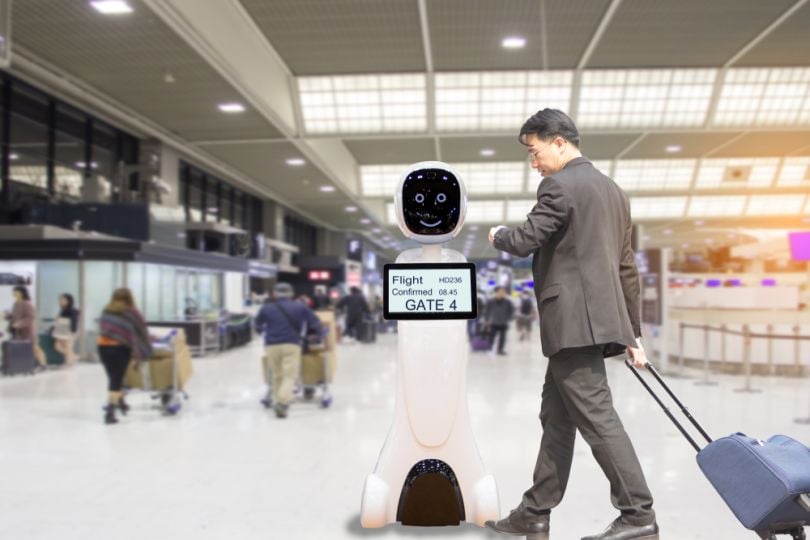 Image: Shutterstock
Image: Shutterstock
Medical robots have arrived on the scene in big ways recently to help healthcare professionals treat medical conditions and streamline hospital processes. Though, healthcare workers began experimenting with this technology in the 1980s, and robots became a mainstay in the surgical field in the 1990s.
Since then, medical robots have taken on a variety of roles within the healthcare industry. Telepresence robots enable doctors to check in with patients remotely; rehabilitation robots aid patients in performing certain movements post-surgery; surgical robots are used by surgeons to assist with various surgeries and operations; and companion robots reduce anxiety and depression among older adults. Healthcare organizations even rely on robots to transport medical supplies, dispense prescription drugs and help with sanitation and clinical management.
By taking on more responsibilities, medical robots free up healthcare workers to focus more on patients, which has some industry professionals feeling excited about the future of robots in healthcare.
Below are the main types of medical robots introducing the latest technologies to the healthcare sector and enhancing the relationships between healthcare professionals and patients.
Types of Medical Robots
- Surgical Robots
- Service Robots
- Exoskeleton Robots
- Rehabilitation Robots
- Social Robots
5 Types of Medical Robots
Hospitals and healthcare organizations are integrating medical robots into their workflows, and tech companies are accelerating the adoption of robotics in the healthcare industry.
Surgical Robots
Surgical robots work in tandem with surgeons to complete minimally invasive procedures. These robots consist of tools, equipment, sensors and software that communicate with each other to form an interconnected ecosystem that can deliver insights and inform a surgeon’s decisions.
Vicarious Surgical’s Robotic System
Vicarious Surgical’s robotic system equips surgeons with a console and a robot with tiny human-like arms for more precise operations. Fitted with 28 sensors per arm, the company’s robot imitates surgeon’s movements and displays impressive rotational capabilities. Outfitted with a camera, Vicarious Surgical’s robot allows surgeons to get a better look at a patient’s anatomy while making incisions as small as a centimeter for minimally invasive procedures.
Intuitive’s Da Vinci Platform
Intuitive’s Da Vinci platform — a leading robot within the medical robot niche — is made up of interconnected systems, software and medical instruments. The platform compiles analytics for teams to study, so they can make their procedures more effective and deliver a higher-quality patient experience. In addition, teams can run simulations through the platform, training surgeons with real-life scenarios before they enter the operating room (OR).
Asensus Surgical’s Senhance Surgical System
Asensus Surgical’s Senhance Surgical System gives surgeons more control with a suite of technologies and equipment. The system lets surgeons chart a clearer path with an eye-controlled camera while alerting surgeons when they apply too much pressure or tension during a procedure. Because the Senhance system employs reusable equipment, many healthcare organizations find it to be an affordable option.
Energid Technologies’ Actin SDK Software
With surgical robots providing much-needed support to surgeons, there is a need for ensuring these robots remain cost-effective while staying in peak shape. Energid Technologies addresses this concern by developing and refining medical robot technologies with its Actin SDK software. Actin SDK specializes in controlling the movements of multiple robots, so different parts of medical robots don’t interfere with one another. This way, surgeons can fine-tune their current systems without having to replace them.
More on Healthtech InnovationsCould Virtual Reality Be Used for Pain Relief? Flowly VR Says Yes.
Service Robots
Service robots perform basic non-patient-facing tasks to streamline the operations side of healthcare organizations. Employing artificial intelligence and sensors, these robots learn to navigate their surroundings and interact with patients and hospital personnel. They can perform simple functions like transporting materials, supplying teams with personal protective equipment (PPE) and delivering supplies and medications to patients.
Diligent Robotics’ Moxi Robot
Diligent Robotics’ Moxi robot combines AI-powered automation and social intelligence to complete basic hospital tasks. Besides delivering medications and transporting medical supplies, the robot has the awareness to adapt to workflows through repetition while moving out of the way of humans and even posing for selfies. Moxi can then relieve hospital and nursing staff of mundane duties, addressing nursing shortages and reducing burnout among current nurses.
Exoskeleton Robots
Exoskeleton robots act as suits that attach to human users, consisting of sensors, levers, motors and other components that enable motion. These kinds of medical robots rely on sensors to detect electrical signals within a patient’s body, either instigating movement or accommodating a patient’s movements. In some robots, human users are able to activate and control the exoskeleton with buttons and other devices.
Rewalk Robotics’ Personal Exoskeleton
ReWalk Robotics’ personal exoskeleton assists patients who are relearning how to walk after suffering spinal cord injuries. Made up of hip, knee and ankle levers, the exoskeleton helps users maintain a natural gait and can be tailored to fit the walking patterns of each individual. Users can also alter the robot’s responses with wrist buttons and changes in their torso movements to navigate stairs, curbs and other environments.
Harvard Biodesign Lab’s Soft Exosuits
The Harvard Biodesign Lab has made massive strides in the field of exoskeletons with its soft exosuits. In contrast to exoskeletons, these suits wrap more tightly around a user’s body with flexible materials, avoiding the bulkiness of previous exoskeletons that can inhibit natural human motion. The hope is that this latest version of exoskeleton robots will provide a more seamless experience for users while aiding the motions of those with lower muscle weakness.
More on Healthtech Innovations94 Top Healthcare Startups and Healthtech Companies
Rehabilitation Robots
Similar to exoskeleton robots, rehabilitation robots depend on sensors to detect electrical signals along a patient’s skin, activating motors to either assist with motion or perform the desired movements for the patient. The main difference is that these robots specialize in helping patients recover lost abilities and regain bodily control and autonomy.
Barrett Technology’s Burt Robot
Barrett Technology’s Burt robot can partner with therapists to support patients looking to overcome weakness or paralysis in their hands and arms. Burt attaches to a patient’s forearm and facilitates movement in the upper extremities as patients engage in games. This kind of robot-assisted therapy is ideal for patients recovering from a range of conditions, including strokes, brain injuries, spinal cord injuries, Parkinson’s disease and multiple sclerosis.
Myomo’s MyoPro Robot
Myomo’s MyoPro robot is a brace that attaches to the arm and hand and is designed to restore function to the upper extremities. The brace detects the nerve signals within a patient as the patient attempts to perform a desired motion. Patients remain in control of their limbs the entire time since the MyoPro robot simply magnifies muscle signals to guide motions. As a result, patients can recover from injuries and neurological diseases through non-invasive means.
More on Healthtech InnovationsIoT in Healthcare: 16 Examples of Internet of Things Healthcare Devices and Technology
Social Robots
Social robots are designed to sustain more complex interactions with humans, often exhibiting human features to convey and evoke appropriate emotional responses. These robots are equipped with AI and machine learning, as well as sensors and cameras, to process human words and actions and deliver responses based on context.
Embodied’s Moxie Robot
Embodied’s Moxie robot helps kids with learning disabilities cultivate their social and emotional intelligence. The robot serves as an AI friend for kids, complementing its soft torso and human-like gestures with conversational AI that powers entertaining interactions. Moxie is equipped with numerous games and a screen that filters out inappropriate content, offering kid-friendly activities that nourish children’s socio-emotional growth.
Softbank Robotics’ Pepper Robot
Softbank Robotics’ Pepper robot serves as a companion to older patients and those going through rehabilitation. Displaying curvy features, Pepper presents a user-friendly design and a humanoid appearance that is familiar to patients. In addition, Pepper can recognize human faces and basic emotions while possessing speech recognition in 15 languages. These details foster more personal interactions between Pepper and patients of various backgrounds.
If the website content violates your rights, please contact us to delete it。








